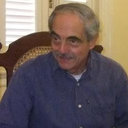Intrathecal synthesis of immunoglobulins in eosinophilic meningoencephalitis due to Angiostrongylus cantonensis.
Ключови думи
Резюме
Eosinophilic meningoencephalitis due to the nematode Angiostrongylus cantonensis, which is endemic to Cuba, occurs in children and is due to accidental contact with soil snails. The course is less often fatal than in adult patients in southeastern Asia. Cerebrospinal fluid (CSF) and serum samples from 24 pediatric patients were analyzed and evaluated in CSF/serum quotient diagrams (Reiber graphs) to characterize the neuroimmunological response and the blood-CSF barrier dysfunction that occur in the course of the disease. At the time of the first diagnostic lumbar puncture, together with eosinophilic pleocytosis (1,920 +/- 400 cells/microl), intermediate blood-CSF barrier dysfunction (i.e., an increased CSF/serum albumin quotient) with no intrathecal immunoglobulin G (IgG), IgA, and IgM class response was observed in all cases. Seven days later, at the time of early clinical recovery, the blood-CSF barrier dysfunction was normalized in 75% of the patients, but meanwhile, intrathecal immunoglobulin synthesis emerged in all cases, as either a two-class response (IgG and IgA in 85% of the patients) or a three-class response (IgG, IgA, and IgM; 30%). The fraction of eosinophilic cells (40%) remained large despite a decreasing total cell count. The neuroimmunological pattern of this inflammatory response to the parasite and its toxins is discussed with regard to the CSF patterns of other infectious diseases caused by bacteria or viruses.


